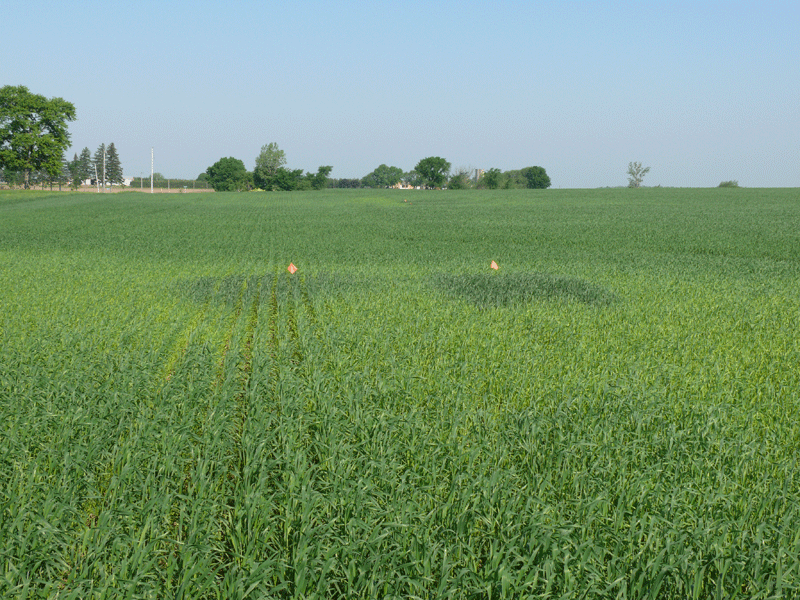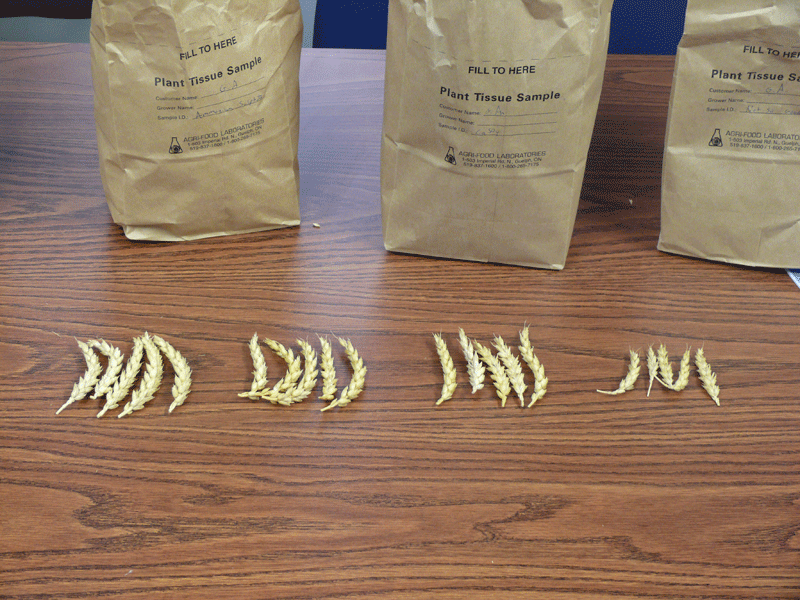Cropside: Sulphur solution!
AGRONOMIC INFORMATION FROM ONTARIO'S CROP SPECIALISTS

SULPHUR WAS THE “buzzword” in the winter of 2012. It was a part of every presentation I gave. So much sulphur was purchased last spring that we “ran out”, or shorted the market. Prices increased significantly, making application much more expensive. Yet, until last winter, canola was the only crop that we had even talked about sulphur deficiency on. So after another year, where are we at on sulphur?
Sulphur deficiency in wheat looks very much like nitrogen deficiency. The leaves start by becoming a pale green, and eventually look yellow (Figure 1). The difference is that the whole plant will yellow, with the newest growth being most affected. Unlike nitrogen, sulphur is not mobile in the plant, thus the newest growth shows the most impact.
PHOTO: sulphur deficiency in wheat.

Sulphur deficiency can be corrected easily with an application of sulphate (SO4) fertilizer. The two dark green spots in the middle of the sulphur deficient (yellow) area have had sulphur applied, each one from a different source (Figure 2). Response was rapid and obvious. Sulphur deficiencies can be corrected after significant symptoms have developed with good success and almost no yield loss.
PHOTO: the two dark green spots in the middle of the sulphur deficient (yellow) area have had sulphur applied.

Sulphur deficiency and response was considerably less in 2012 than in 2011. However, when sulphur is deficient, yield loss is significant (Figure 3). To date, we have not been able to develop any diagnostic tool to determine fields that will be deficient versus those that are not.
PHOTO: when sulphur is deficient, yield loss is significant.

The challenge will be how to manage the crop in 2013. Best recommendations to date are to apply a low rate of sulphur on wheat fields (5 to 10 lbs/ac) with your first nitrogen application as an “insurance” policy. Do not spend more than $10/acre. Another option would be to apply two strips of sulphur in each field and watch to see any colour differential in the treated versus untreated. Should differences appear, application of sulphur to the balance of the field would be warranted. This would be the least expensive and most accurate method, but requires more management and could add to the workload during the busy planting season.
Whatever you decide to do, don’t ignore sulphur! Yield penalties in wheat, canola, alfalfa and corn can be huge if not corrected! •

















